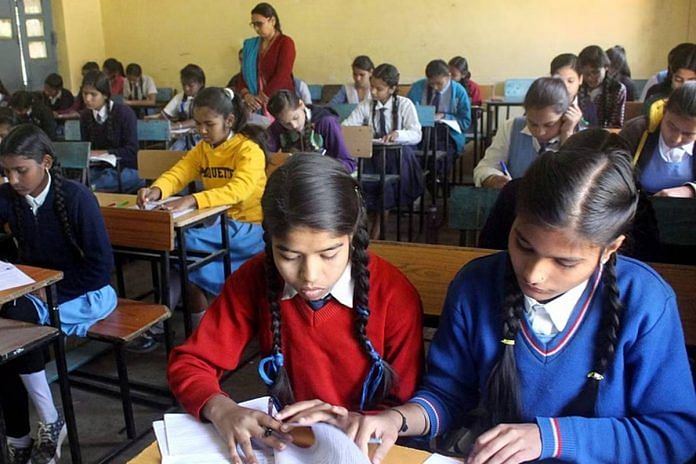New Delhi: Literary works from India, Greece and Syria, the Indian Ocean’s trade routes and tales of forgotten war heroes are some of the topics that students are likely to study in history books from the next academic session, according to suggestions made by an expert panel in the National Curriculum Framework (NCF) draft.
Along with these, the draft — released on Thursday — also suggested reducing the fear of mathematics among students, while making a push for teaching lessons in their mother tongues.
The National Education Policy (NEP) aims to devise a framework to bring about a paradigm shift in education, with focus on holistic development of children, learning in mother tongue and cultural rootedness. The NCF is a key component of the NEP and is intended to be a blueprint for school syllabi across the country when finalised.
Language learning
The draft policy reiterated the three-language formula suggested in the NEP, adding that the “home language” should be the medium of instruction. “The three languages learned by children will be the choices of states, regions, and of course the students themselves, so long as at least two of the three languages are native to India. In particular, students who wish to change one or more of the three languages they are studying may do so in Grade 6 or 7, as long as they are able to demonstrate basic proficiency in three languages (including one language of India at the literature level) by the end of secondary school,” the NEP guidelines say.
The NCF draft said that students will learn at least three languages in their school years, denoted “R1”, “R2”, and “R3”. “’R1′ is often the most commonly used local language, R2 could be any other language, including English. R3 will be any other language that is not ‘R1’ or ‘R2’. The state or the relevant bodies need to decide upon ‘R1’, ‘R2’, or ‘R3’,” the framework added. It added that “R1” will be the language used as the medium of instruction, and in which literacy is first attained. Preferably, it should be the most familiar language of the students, which is usually the mother tongue/home language, the draft said.
“With India’s linguistic diversity, even within a classroom, it may not be possible to have the home language as the ‘R1’ for all students; in such circumstances, a language which is familiar to the students should be chosen as ‘R1’ — which is often the most commonly used local language,” the draft framework said.
Mathematics education
The committee said that the “fear of maths” among students should be addressed by integrating the subject with arts, sports and language. The subject should be made more creative and aesthetic for school students, it said, adding that the subject has traditionally been “robotic” and “algorithmic”.
The draft also said that measures should be taken to break the belief that girls are not good at mathematics.
“Teaching mathematics through sports could be fun for most of the students those who really struggle in understanding the concepts in maths. Through sports concepts related to measurement and mensuration could be easily taught and related unit conversions can be discussed simultaneously,” the draft said.
History education
According to the draft, students will be taught world and Indian history, including lessons about the forgotten figures of the Independence struggle.
The ancient literary (mythological and religious) works produced in India, Greece, and Syria, as well as “covering the rise of new religions and philosophies in India and China” are set to be a part of history books.
This course will also introduce students both to the widespread agricultural ecology and economy in India and the Indian Ocean trade networks as well as the overland trade routes such as the “Silk Road” to see how India was deeply connected to the rest of the world historically.
Along with this, it will also chart the emergence of the colonial rule in India from the 16th century, when the first European joint stock trading company arrived in India, to the birth of the nation-state in 1947.
“The course will familiarise students with the struggle between European colonial powers for control over various parts of India, and the various forms of Indian resistance, including peasant and Adivasi resistance movements,” it said.
“The final part of the course will discuss India’s freedom struggle and will include not only its well-known figures but also some lesser-known figures of the struggle,” it added.
(Edited by Nisheeth Upadhyay)



